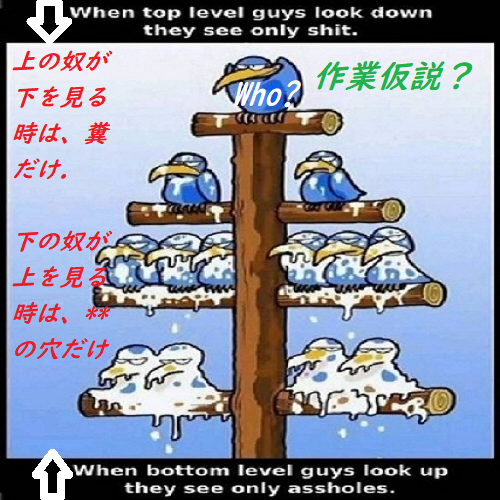
科学がその確信(belief)に達する方法(way やり方)は,中世の神学の方法とは全く異なっている。一般原則から出発し演繹的に進むこと(演繹法を使って推論をすること)は危険であることを経験は絶えず示してきた(我々は経験によって知ってきた)が,なぜ危険かと言えば,一般原則は間違っているかも知れないし,また,(原則は間違っていなくても)一般原則に基づく推論に誤りがあるかも知れないからである。科学は(証拠のない)大規模な仮定から出発するのではなく,観察や実験によって発見された個々の事実から出発する。そのような多くの事実から一般的な法則に到達する。もしそれが真理である場合には,取上げられている(諸)事実はその法則の実例となる。このような法則は積極的に主張されるのではなく,まず作業仮説(a working hypothesis)として受け容れられる。もし,その作業仮説が正しければ,従来観察されなかった一定の現象が一定の環境の下で起こることになる。もしそういった現象が起こるならばそれはその分だけ作業仮説を確証することになる。もし起こらなければ作業仮説は斥けられ,新しい作業仮説が考案されなければならない。多くの事実が作業仮説に適合するということがわかったとしても,-最後には,高度に蓋然的である(極めて起こりそうなことである/極めて正しそうなことである)と考えられるようになるであろうが- それでその作業仮説は確証されるということにはならない。そのような場合(高度に蓋然的だと考えられるようになった場合),それは作業仮説というよりむしろ(一つの)理論(学説)と呼ばれる(注:working hypothesis は通常「作業仮説」と訳されるが,津田源一郎(訳)『宗教から科学へ』では「操作上の仮定」と訳されている。また,「a theory rather thanb a hypothsis(仮説というより理論/学説)」を津田氏は「推測」と訳している)。多くの種々の理論は -それらの理論は各々諸事実から直接構築されており- 新しい理論またはより一般的な仮説の基礎となるかも知れず(なる可能性があり),それらがもし正しければ,それらの新しい理論などから(古い)種々の理論が結果として生じることになる(注:より上位の/包括的な理論から下位の議論を導き出すことができる)。そして,この一般化の過程には限界はない。しかし,一方,中世の思考(思惟)においては,最も一般的な原理原則が出発点であったが,科学においてはそれは最終的な結論となる。最終的(な結論)というのは,つまり,ある時期においての最終的な結論ということであり,後の段階において何らかのさらに広い法則の事例となる傾向がある。
Chapter 1: Grounds of Conflict, n.5
The way in which science arrives at its beliefs is quite different from that of mediaeval theology. Experience has shown that it is dangerous to start from general principles and proceed deductively, both because the principles may be untrue and because the reasoning based upon them may be fallacious. Science starts, not from large assumptions, but from particular facts discovered by observation or experiment. From a number of such facts a general rule is arrived at, of which, if it is true, the facts in question are instances. This rule is not positively asserted, but is accepted, to begin with, as a working hypothesis. If it is correct, certain hitherto unobserved phenomena will take place in certain circumstances . If it is found that they do take place, that so far confirms the hypothesis ; if they do not, the hypothesis must be discarded and a new one must be invented. However many facts are found to fit the hypothesis, that does not make it certain, although in the end it may come to be thought in a high degree probable ; in that case, it is called a theory rather than a hypothesis. A number of different theories, each built directly upon facts, may become the basis for a new and more general hypothesis from which, if true, they all follow ; and to this process of generalization no limit can be set. But whereas, in mediaeval thinking, the most general principles were the starting point, in science they are the final conclusion — final, that is to say, at a given moment, though liable to become instances of some still wider law at a later stage.
出典:Religion and Science, 1935, chapt. 1.
情報源:https://russell-j.com/beginner/RS1935_01-050.HTM
